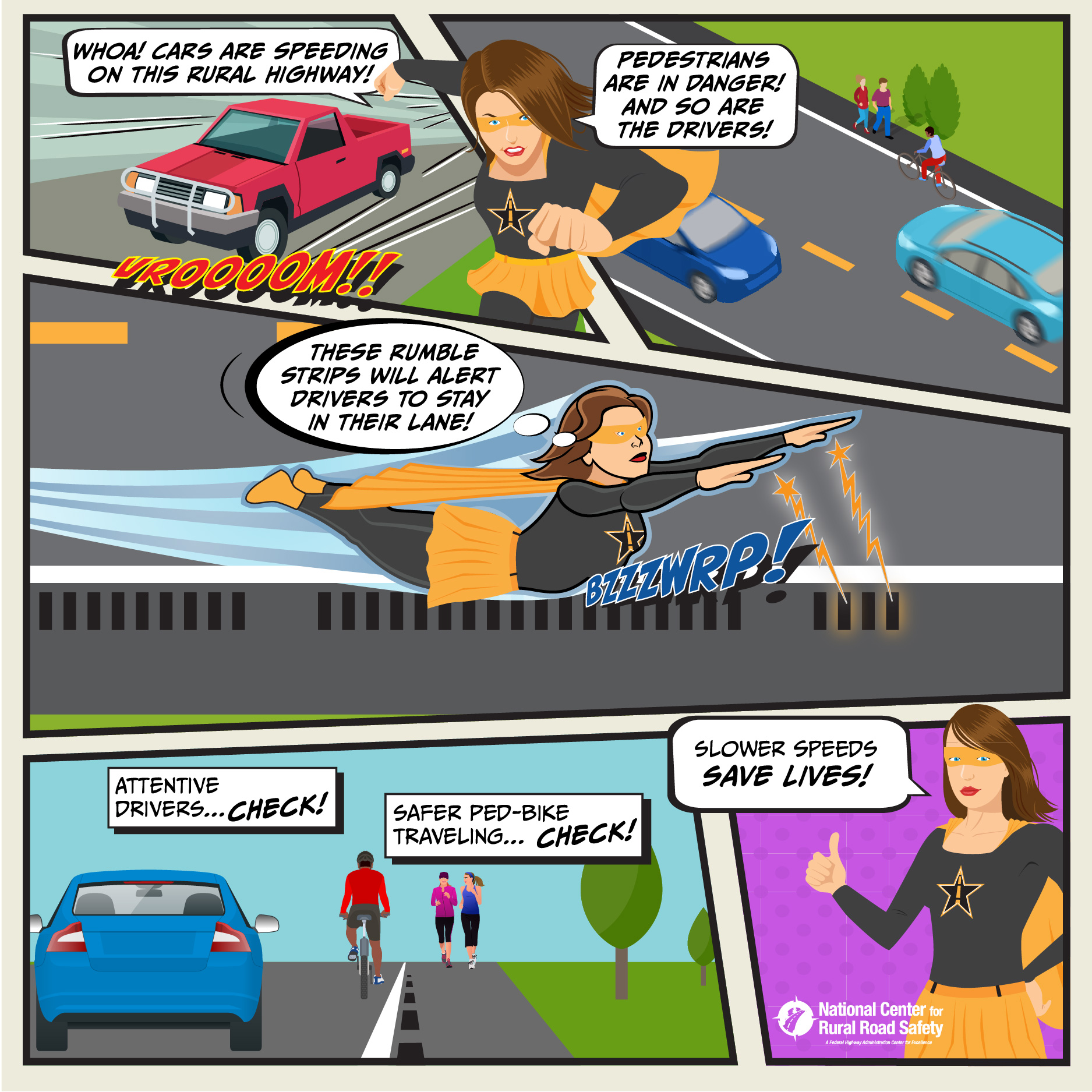

#RRSAW2024 Day 2: Speed
For Rural Road Safety Awareness Week (RRSAW) last year, we posed a question as the theme, “What’s Speed Got to Do With It?” The fact is speed has everything to do with it.
So, for 2024, we have dedicated Day 2 of RRSAW to examine the prominent role of speed in rural roadway departures (RwDs) as part of the overall theme, “Life Between the Lines: Reducing Rural Roadway Departures.”
Speed plays a big part in rural road fatalities.
- 28% of the 17,103 rural traffic fatalities in 2021 involved speed.
- 74% of drivers in rural fatal traffic crashes were driving on roadways where the posted speed limit was 55 mph or higher.
- At posted speed limits of 50 mph or higher:
- 78% of rural rollover RwD crashes are fatal.
- 84% of head-on rural RwD crashes are fatal.
- 63% of rural RwD tree crashes are fatal.
The human body is vulnerable and has physical limits for tolerating crash forces before death or serious injury occurs. More specifically, when kinetic energy—the energy of a moving object—exceeds a certain threshold, a fatal or serious injury occurs. As speed increases, so does kinetic energy, and consequently the probability and severity of crashes also increases.
Through speed management tools, such as speed limit setting, speed cameras, enforcement, and road design that discourages high speeds (e.g., speed humps, roundabouts, and narrowed lanes), vehicles can be compelled to travel at safer speeds.
RoadStar
Bzzzwrp! Where speed is present, so is RoadStar. RoadStar implements rural road designs that promote traffic calming and safe speeds, sets appropriate speed limits, calls for speed limit enforcement, and deploys speed feedback signs.
To see RoadStar in action, click the image below.
Resources
Safe System Approach (SSA)
The Safe Speeds element of SSA promotes safe speeds in all roadway environments through a combination of roadway design, targeted education, outreach campaigns, and enforcement. For RwDs, safe speeds:
- Increase a driver’s reaction time.
- Decrease the likelihood of a driver losing control of a vehicle.
- Reduce the impact of forces on the body during a crash.
Everyday actions that reduce RwDs
Humans are unlikely to survive high-speed crashes. Here are some practical things to do to promote slower speeds and save lives:
- Educate road users about speed signs and pavement markings, especially on curves and steep grades.
- Remind drivers to adjust their speed around various modes of travel on a rural roadway, such as farm equipment, horse and buggies, pedestrians, and bicyclists.
- Review policies on speed limit setting to ensure they are consistent with the SSA.
More
- Understanding Car Crashes: It’s Basic Physics | Watch Video
- Understanding Car Crashes: When Physics Meets Biology | Watch Video
- Safety Over Speed | Visit Website
- Safe System Approach for Speed Management | View pdf
- USDOT Safer Speeds | Visit Website
- FHWA Proven Safety Countermeasures | View Website
- FHWA’s Rural Speed Management Eprimer for Rural Transition Zones and Town Center | View Website
